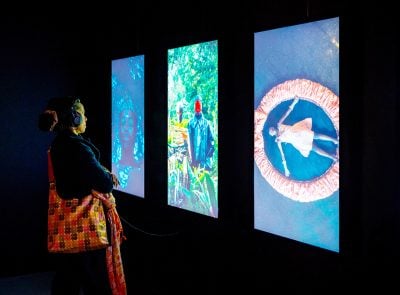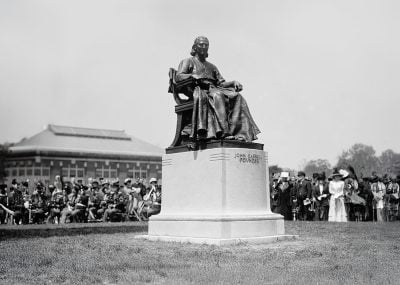There are few countries as diverse as Ethiopia. The country is home to at least 80 different languages in addition to Amharic, the official language, which itself has more than 200 dialects and its own alphabet. What appears to bind these linguistic groupings together is religion, with the majority of Ethiopians being devout Orthodox Christians – although Sunni Muslims and those of African traditional beliefs live in easy harmony with them. Even though Ethiopia can claim to be the first country in the world to adopt Christianity as a state religion, the origins of many much older empires can be traced to within its borders. The most important of these is at Aksum – or Axum, to give the town its present-day spelling – that dates its beginnings to two or three hundred years before the birth of Christ. And, long before this, this was the region where Makeda, the Queen of Sheba, reigned.
The town today is best known to the outside world for two central aspects of Ethiopian culture, one hidden to the world, the other being very evident – the enormous monolithic stelae or standing stones. These mark the tombs of a ruling elite of a remarkable civilisation that until around 300AD held sway over both sides of the Red Sea, in both southern Arabia, across the Horn of Africa and deep into the interior of the continent. Greek traders recorded that Aksum was the centre of an African empire that had trade links with India, Arabia, Rome, Egypt and Persia as well as Greece.
To the faithful of the Ethiopian Orthodox Church, Aksum is also the place where the revered Arc of the Covenant was brought by Menelik I, son of the Queen of Sheba and King Solomon of Israel, as detailed in the thirteenth-century account Kebra Negast (‘The Book of the Glory of Kings’). The Arc of the Covenant is today reputedly kept in a small chapel, the holiest sanctuary in Ethiopia, beside the St Mary of Zion church in Aksum. It’s jealously guarded by monks who deny allcomers entry to the chapel or sight of the treasured relic. The original church of Saint Mary of Zion was built in the fourth century during the reign of King Ezana, who converted the Aksumite kingdom to Christianity after he himself was converted by two Syrian Christian priests who told him about the life of Jesus Christ. Christianity spread across the region with churches and monastries being established and the priesthood exerting a powerful influence on the population.
Coffee culture
Aksum might also claim to have been at the beginning of an enduring love affair that practically all Ethiopians have with coffee. The coffee ceremony is performed regularly in most Ethiopian households, starting with the roasting of raw beans and an appreciation of the heady aroma before the pouring of the liquid from a traditional coffee pot into small cups.
There are various legends concerning the discovery of this drink, including one that says a goatherd noticed his animals became particularly frisky after eating wild coffee berries. But as a goat’s stomach could hardly have broken down the raw berries to release caffeine, a more credible account has it that the great Chinese fleets, when they visited Southern Arabia, entertained local dignitaries aboard their ships and introduced them to tea. After the Chinese abandoned these costly visits to Africa and Arabia, local people tried to replicate the Chinese tea ceremony.
Tea was not indigenous, but coffee was – and was possibly taken to Arabia from Africa as a decorative plant. Once the art of coffee making had been discovered in present-day Yemen, the tradition quickly spread back to Africa’s mainland. After the fall of Aksum between the seventh and eighth centuries, power gravitated south-east, where in the thirteenth century King Lalibela supervised a stupendous project to build 11 churches from the bedrock. These are still populated by priests and visited by both the devout and stunned tourists who can almost believe the local legend that they were excavated by angels. In later centuries, myriad other foreign influences permeated Ethiopian life and culture but thanks to the country’s geography, protected by the rocky, mountainous terrain that guarded the 2,500m central plateau from the coast and gives rise to the country’s description as ‘the roof of Africa’, no-one conquered the region.
Enter the Europeans
Jump forward to the sixteenth century and Europe had become fixated on the legend of a devout Christian priest-king called Prester John, who was seemingly immortal as his kingdom possessed a ‘Fountain of Life’. In 1520 the Portuguese king, Henry the Navigator, sent an expeditionary force to find Prester John. This Portuguese mission travelled 450 miles from the Red Sea coast to central Ethiopia to find the king, observing the great number of Orthodox Christian churches in the region, but finding the kingdom and its leader, Emperor Lebna Dengel, lived far removed from the mythical splendour of legend and, despite their best attempts, could not be converted from Orthodox Christianity to the Catholic faith. Almost as soon as the Portuguese left, a Muslim army laid siege to Ethiopia. Dengel sent a frantic message to the Portuguese who sent a force from India to come to his rescue. Some Indo-Portuguese architectural influence is evident at Gondar where, in the mid-seventeenth century, King Fasilidas built his permanent palace. This served as Ethiopia’s capital until the mid-nineteenth century when King Menelik established Addis Ababa as a ‘southern Aksum’.
Although Italy, France and Britain all attempted to project their power in Ethiopia, thanks to Ethiopia’s remote topography it has managed to resist conquest and colonisation to retain its unique traditional identity. Nevertheless, it has absorbed many foreign influences, but only those of its own choosing. It still retains its own alphabet, writing and official language.
Visitors invariably find the rich local culture both welcoming and fascinating, and that serves to underpin a vibrant tourism sector. Happily, it also ensures Ethiopians can continue to take real pride in the unique cultural heritage of their country.
Want to continue reading? Subscribe today.
You've read all your free articles for this month! Subscribe now to enjoy full access to our content.
Digital Monthly
£8.00 / month
Receive full unlimited access to our articles, opinions, podcasts and more.
Digital Yearly
£70.00 / year
Our best value offer - save £26 and gain access to all of our digital content for an entire year!
 Sign in with Google
Sign in with Google 


